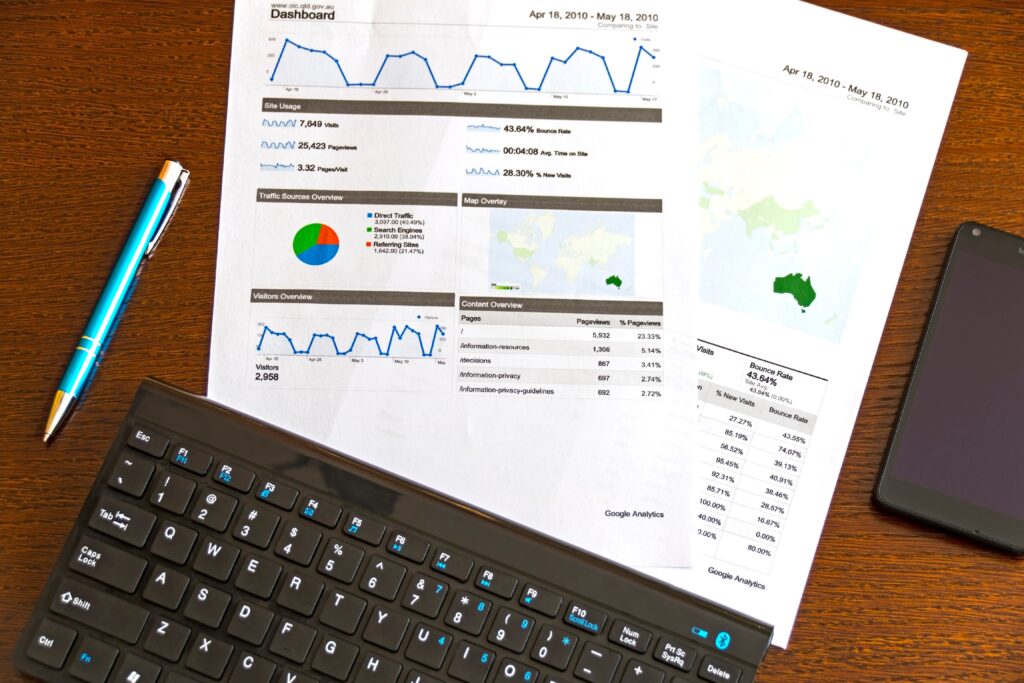In the fast-paced world of business, staying ahead of the competition requires making informed decisions based on accurate predictions. This is where the powerful combination of Artificial Intelligence (AI) and Machine Learning (ML) comes into play. By leveraging AI and ML for predictive analytics, businesses can unlock valuable insights from their data, anticipate trends, identify patterns, and make proactive decisions. In this article, we delve into the realm of predictive analytics and explore how AI and ML are transforming the business landscape.
Understanding Predictive Analytics

Predictive analytics involves using historical data, statistical modeling techniques, and advanced algorithms to forecast future outcomes and trends. It goes beyond descriptive analytics, which focuses on understanding past and current events. Predictive analytics utilizes AI and ML algorithms to analyze large volumes of data, identify patterns, and make accurate predictions based on those patterns.
Enhancing Customer Understanding and Engagement
AI and ML algorithms enable businesses to gain a deeper understanding of their customers. By analyzing customer data, purchase history, browsing patterns, and social media interactions, predictive analytics can identify customer preferences, anticipate their needs, and personalize marketing campaigns. This leads to improved customer engagement, higher conversion rates, and enhanced customer satisfaction.
Optimizing Operations and Resource Allocation
Predictive analytics helps businesses optimize their operations and resource allocation. By analyzing historical data and external factors, AI and ML algorithms can predict demand, identify bottlenecks, and optimize production schedules. This enables businesses to make informed decisions about inventory management, supply chain optimization, and resource allocation, resulting in cost savings and improved operational efficiency.
Mitigating Risks and Fraud

AI and ML play a crucial role in risk mitigation and fraud detection. By analyzing historical data, patterns, and anomalies, predictive analytics can identify potential risks and fraud indicators. Whether it’s in the financial sector, insurance industry, or cybersecurity realm, AI and ML algorithms can detect fraudulent activities, flag suspicious transactions, and provide early warnings, enabling businesses to take proactive measures to mitigate risks and safeguard their assets.
Forecasting and Demand Planning
Accurate demand forecasting is vital for businesses to optimize inventory levels, production planning, and pricing strategies. AI and ML algorithms excel in demand forecasting by analyzing historical sales data, market trends, seasonality, and external factors. With predictive analytics, businesses can forecast demand more accurately, align production and inventory levels accordingly, and make pricing decisions that maximize profitability.
Challenges and Considerations

While the potential benefits of leveraging AI and ML for predictive analytics are immense, there are challenges and considerations to address. Data quality, data privacy, and security are crucial factors to ensure accurate predictions while protecting sensitive information. Transparency and interpretability of AI and ML models are also essential for building trust and gaining acceptance. Furthermore, businesses must invest in skilled data scientists and ensure the ethical and responsible use of predictive analytics.
The Future of Predictive Analytics with AI and ML
The future of predictive analytics with AI and ML is bright. As technologies continue to advance, AI algorithms will become more sophisticated, enabling businesses to make more accurate predictions and generate actionable insights in real time. Integration with Internet of Things (IoT) devices and advancements in edge computing will further enhance predictive capabilities. Moreover, the combination of predictive analytics with other emerging technologies like natural language processing and computer vision will open up new possibilities for business growth and innovation.
Conclusion
Predictive analytics powered by AI and ML is revolutionizing the way businesses operate and make decisions. By harnessing the power of data and advanced algorithms, businesses can gain valuable insights, optimize operations, mitigate risks, and deliver personalized customer experiences. As AI and ML technologies continue to evolve, businesses that embrace predictive analytics will have a significant competitive advantage in an increasingly data-driven world. With accurate predictions and proactive decision-making, businesses can chart a successful path to growth and profitability.
FAQs
What is the difference between predictive analytics and descriptive analytics?
Answer: Descriptive analytics focuses on understanding past and current events, providing insights into what has happened. Predictive analytics, on the other hand, uses historical data and advanced algorithms to forecast future outcomes and trends.
How can businesses leverage predictive analytics to enhance customer engagement?
Answer: By analyzing customer data and patterns, predictive analytics can help businesses understand customer preferences and needs. This enables personalized marketing campaigns, targeted recommendations, and improved customer engagement, leading to higher satisfaction and conversion rates.
What industries can benefit from predictive analytics in risk mitigation and fraud detection?
Answer: Predictive analytics can be beneficial in various industries, including finance, insurance, cybersecurity, and healthcare. By analyzing data for patterns and anomalies, businesses can detect potential risks and fraudulent activities, enabling proactive measures to mitigate them.
How does predictive analytics assist businesses in demand forecasting and planning?
Answer: Predictive analytics uses historical sales data, market trends, and other factors to forecast demand accurately. By optimizing inventory levels, production planning, and pricing strategies based on these predictions, businesses can align their resources effectively and maximize profitability.
What are some of the challenges in implementing predictive analytics with AI and ML?
Answer: Challenges include ensuring data quality, privacy, and security, as well as building transparent and interpretable AI and ML models. Organizations also need to invest in skilled data scientists and ensure the ethical and responsible use of predictive analytics to gain its full benefits.

